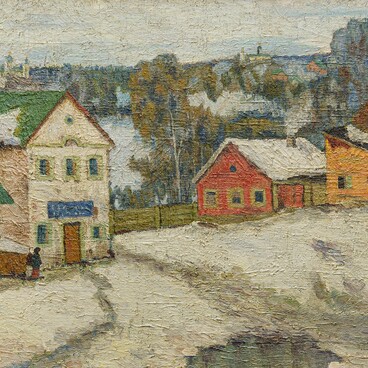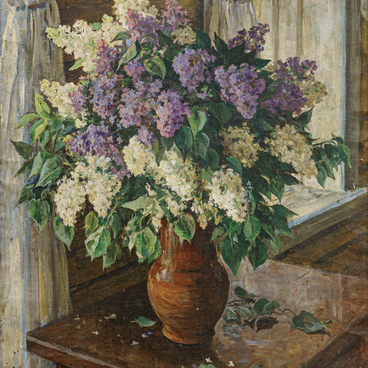The Russian artist Ivan Ivanovich Bilibin was born in Saint Petersburg in the second half of the 19th century. He participated in various art exhibitions, such as those of the Saint Petersburg Society of Artists and the Society of Independent Artists. Ivan Bilibin specialized in landscapes. The artist lived and worked in Saint Petersburg until 1916. Unfortunately, not much is known about him, and his known oeuvre is not very extensive.
The Khimki Art Gallery houses the seascape “Morning in the Ust-Narva Bay” by Ivan Bilibin. In the foreground, there is a bay with small waves on the surface of the blue water. Above is a blue sky with white cirrus clouds. Three sailing ships with lowered sails are moored in the bay. Further out to sea where the water is deeper, a one-tube passenger steamship is anchored. Ust-Narva was an inexpensive and popular resort with regular sailings. There is a sandy shore with rickety fishing boats and fishermen. Beyond them are mooring berths, shipyards, the outskirts of Ust-Narva, and villages of marine pilots and fishermen. The shallow seabed of this area of the Gulf of Finland is dangerous for deep-draft vessels as it is strewn with huge boulders.
The painting conveys the calmness and serenity of the early morning, filled with the singing of birds, the clanking of fishing oar locks, and the gentle sound of the calm waves. Most of the local residents and vacationers are still asleep, and only a few fishermen are going about their lives.
Ivan Bilibin painted the seascape “Morning in the Ust-Narva Bay” in a soft and light manner, using a pastel color palette. It does not reveal the impressionistic influence that was characteristic of many artists in the early 20th century. Traditional realism, careful study of details, and poetic morning fog disappearing in the rays of the rising sun — these are the main features of this painting.



